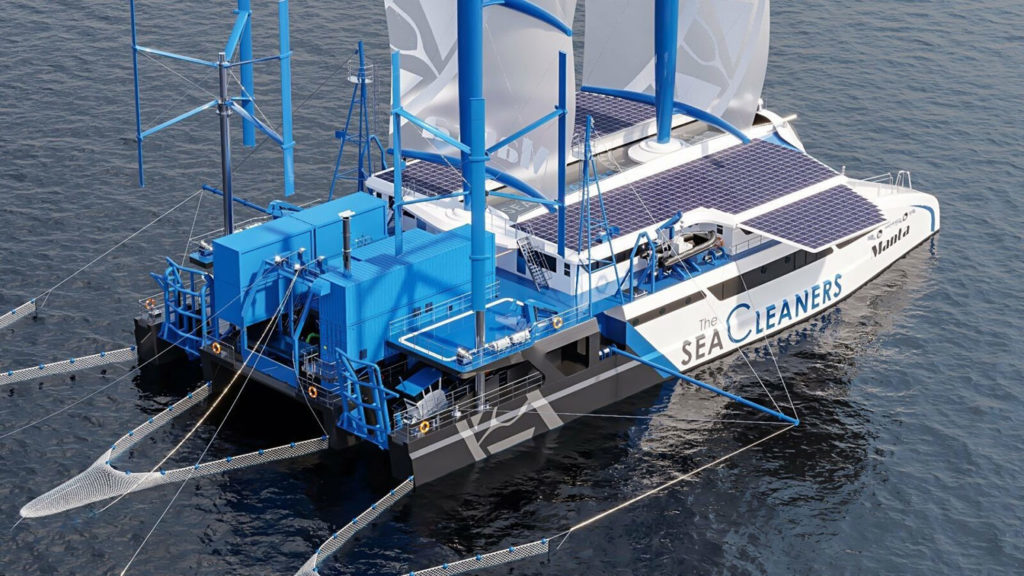THE OCEAN CLEANING SAILBOAT

The Ocean Cleaning Electric Sailboat
A Sea Cleaning Electric Boat
If you have spent time in the ocean or on the shoreline you may have noticed that the ocean collects a lot of garbage. We have trash that will float out there until it either washes up on shore or we clean it up and take care of it. This is a great idea that will help a ton of wildlife from whales and orcas to smaller fish and turtles. Cleaning up the ocean will even benefit our lovely sea otters, seal, and birds of the Elkhorn Slough.
In Ashwini Sakharkar article
Meet Manta, a sea-cleaning sailboat that feeds on plastic waste
Ashwini states “Each year, an estimated eight million tonnes of plastic end up in the ocean. According to the UN, if nothing is done, there will be more plastic waste than fish in the oceans by 2050.”
A French ocean adventurer Yvan Bourgnon was tired of hitting floating objects during his races and seeing the sea turn into a landfill so he decided to take action. He and his team have designed a giant, plastic-eating catamaran powered by renewable energy call Manta. Manta cleans up the ocean and converts the garbage to power.
Yvan Bourgnon is the mastermind behind the SeaCleaners project. He built a 56-meter, 184-foot catamaran called Manta. Our 37 foot fully electric catamaran El Cat has some similar features as Manta. We may not clean the sea but with our electric motor effectively limit further pollution. Now if only we could get the El Cat to run on garbage.
“Around 500kW of onboard renewable energy is generated via two wind turbines, 500 square meters of photovoltaic solar panels, two hydro-generators under the boat, and a waste-to-energy conversion unit (WECU). The power supply from renewable energy sources will allow the Manta to operate 75% of the time autonomously, without using fossil fuels, and with a minimal environmental footprint.”

Manta is powered by renewable energy. Credit: The SeaCleaners
“Thanks to a unique combination of collection means, the Manta will be able to pick up both floating macro-waste and smaller debris from 10 millimeters upwards and up to one meter deep. Depending on the density and closeness of the layers of waste, the ship can collect between 1 to 3 tonnes of waste per hour, with the objective of collecting 5 to 10,000 tonnes per year.
The Manta is the first self-sufficient workboat capable of processing 90 to 95% of the collected plastic waste whilst at sea. The waste-collecting conveyors – similar to the Ocean Cleanup project’s third-generation Interceptor vessel system – bring the waste on board. A waste sorting unit manually separates the waste according to its type. A waste-to-energy conversion unit then converts the collected waste into electricity through the process of pyrolysis, which, in turn, powers all of the Manta’s electrical equipment. This eco-friendly method emits hardly any CO2 or pollutants into the air.”
Taking steps to keep the oceans clean should be our first steps followed by cleaning up the mess we have made. You will be seeing more electric boats in the near future as they not only reduce fuel cost and pollution the also drastically health issues among the workers on the vessels. Monterey Bay Eco Tours El Cat is the first Coast Guard-approved fully electric passenger vessel on the west coast.
